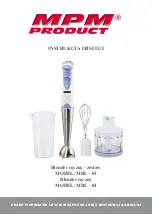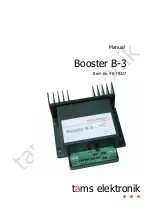
Chapter 8: LAN Connections and Performance
There are rare cases with older LAN equipment in which it may be necessary to disable autonegotiation. If
crc-errors or short packet errors are seen in the management statistics of the LAN port, the attached LAN
equipment has probably configured itself to half-duplex mode and colliding packets are being lost. In such
a case, autonegotiation should be disabled on both the converter and the attached LAN equipment, with
both forced to 100BaseTX full-duplex. Autonegotiation interoperability and standards were not well
understood by the industry at the inception of 100BaseTX, resulting in some older LAN equipment not
understanding the converter's autonegotiation advertisement of strictly full-duplex capability.
It is highly desireable to leave autonegotiation enabled so that changing attached LAN equipment does not
result in the new equipment defaulting to half-duplex if set to autonegotiate. Autonegotiation must always
be enabled for 1000Mbit/s links.
LAN Cabling
It is important to use the correct cabling for proper operation. Use UTP Category 5 network cable with RJ-
45 connectors for the LAN ports, and do not exceed 100 meters (328 feet) in length. Either a straight-
through or crossover cable may be used.
LAN Segmentation and Packet Switching
This converter does not perform MAC address filtering. This reduces system latency by removing two
steps of filtering that have already been performed by attached routers or switches.
LAN Buffering, Loading and Flow Control
This converter contains approximately 500kBytes of total packet buffer. Queue utilization can be
monitored at the converter's statistics HTTP page, and buffer overflow will appear as “Rx oflow” errors at
the same HTTP page.
If the converter's packet memory begins to fill up, the converter applies flow control techniques to the
machines connected to its LANs rather than simply dropping incoming packets. For connected
100/1000BaseTX LANs the converter uses 802.3x flow control. Flow control creates a much more
efficient network by avoiding time-out requirements for packets that would otherwise be dropped during
bursts of network traffic.
Unless disabled in the settings or during autonegotiation, the converter will transmit pause frames to
attached LAN equipment when its buffer has reached approximately 60% capacity. During autonegotiation,
the converter indicates to the attached equipment that it will ignore received pause frames. It would be
unlikely that such frames would be useful as the maximum data rate transmitted by the 100Mbit/s LAN port
of the converter is less than the incoming DS3 rate.
If overflow errors appear for a 1000Mbit/s port at the statistics management page of the converter, confirm
that the pause packet counter shown there is incrementing and that the attached LAN equipment can accept
pause packets. If the overflow errors disappear when the LAN port speed is reduced to 100Mbit/s, it is
possible that the attached LAN equipment is not receiving pause packets in time to interrupt large
1000Mbit/s traffic bursts. It may be necessary to operate at 100Mbit/s in this case, if packet loss during
bursts is unacceptable.
LAN Packet Priority
LAN packets may optionally contain class of service (CoS) information (802.1p information), which may
be used to specify packets that are time critical. Queue space is reserved in the converter to allow frames
with a “high” 802.1p CoS priority setting (configurable in firmware beginning July 2008 or >=6 on older
firmware) to bypass existing frames waiting to be transmitted to the DS3/E3. This allows voice and other
high-priority traffic to experience low-latency transmission.
LAN Packet Order
On single-telecom converters, LAN packets order is guaranteed with the exception that high-priority 802.1p
CoS packets may be transmitted before lower priority packets. On dual-DS3/E3 converters, packet
19












































